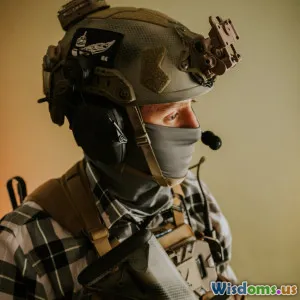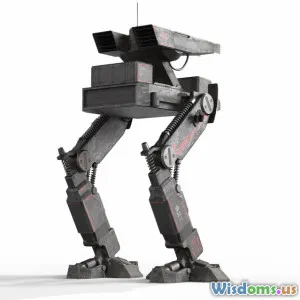
Robotics in Modern Warfare
6 min read Explore the transformative role of robotics in modern warfare and its implications for future military strategies and technologies. (0 Reviews)
Robotics in Modern Warfare
Introduction
In the ever-evolving landscape of military technology, robotics has emerged as a pivotal force shaping modern warfare. As conflicts become increasingly complex and technology-driven, the integration of robotic systems into military operations is not just a trend but a necessity. This article delves into the various facets of robotics in warfare, exploring how these innovations enhance capabilities, improve efficiency, and redefine strategies on the battlefield.
The Evolution of Military Robotics
Historically, military technology has always pushed the boundaries of innovation. From the introduction of tanks in World War I to the use of drones in contemporary combat, each advancement has altered the way wars are fought. Robotics began to take center stage in the late 20th century with the development of unmanned aerial vehicles (UAVs) and remotely operated ground vehicles. These systems have evolved significantly, now incorporating advanced AI and machine learning capabilities, enabling them to operate autonomously and make real-time decisions.
Types of Military Robots
-
Unmanned Aerial Vehicles (UAVs): Commonly known as drones, UAVs are used for surveillance, reconnaissance, and targeted strikes. They provide real-time intelligence without risking human lives. Notable examples include the Predator and Reaper drones utilized by the U.S. military.
-
Ground Robots: These include unmanned ground vehicles (UGVs) designed for various tasks such as bomb disposal, logistics support, and reconnaissance. The PackBot, for instance, is widely used for explosive ordnance disposal.
-
Autonomous Weapons Systems: Emerging technologies are pushing the envelope further with fully autonomous weapons capable of engaging targets without direct human intervention. These systems raise ethical and strategic questions, demanding rigorous debate about their use in combat.
-
Robotic Exoskeletons: Designed to enhance soldier capabilities, exoskeletons allow for greater strength and endurance. They are aimed at reducing fatigue and improving mobility in challenging terrains.
Enhancing Battlefield Efficiency
The integration of robotics in warfare has led to significant enhancements in operational efficiency. Here are some key benefits:
- Increased Surveillance and Intelligence Gathering: UAVs can cover vast areas in a short time, providing valuable intelligence that informs strategic decisions.
- Force Multiplier: Robotics allows a smaller number of troops to accomplish what would traditionally require a larger force. This efficiency can be critical in urban warfare scenarios where maneuverability is limited.
- Reduced Casualties: By deploying robots in high-risk situations, military forces can protect human lives, minimizing casualties during operations.
- Logistical Support: Autonomous ground vehicles can transport supplies and equipment, ensuring that troops are well-supported without exposing them to danger.
Ethical Considerations and Challenges
As the use of robotics in warfare expands, it brings with it a host of ethical concerns. The deployment of autonomous weapons raises questions about accountability and decision-making in combat. Who is responsible if a robot makes a mistake? Moreover, the potential for hacking and the use of robots in asymmetric warfare could lead to unforeseen consequences.
International regulations and discussions are underway to address these challenges, aiming to establish guidelines that ensure the responsible use of robotic systems in military operations.
The Future of Robotics in Warfare
Looking ahead, the future of robotics in warfare appears promising yet uncertain. Advances in AI and machine learning are expected to further enhance the capabilities of military robots, allowing for greater autonomy and efficiency. As nations continue to invest in robotic technologies, the balance of power may shift, prompting a new arms race centered around robotic warfare.
To prepare for this future, military organizations must focus on training personnel to work alongside robotic systems, developing protocols that ensure ethical use, and fostering international cooperation to prevent misuse.
Conclusion
Robotics is revolutionizing modern warfare, offering unprecedented capabilities that are reshaping military strategies and operational effectiveness. As we stand on the brink of this technological revolution, it is essential to navigate the challenges and ethical dilemmas it presents. By doing so, we can harness the benefits of robotics while ensuring that warfare remains a domain governed by principles of humanity and accountability.
The landscape of warfare is changing, and robotics will undoubtedly play a crucial role in defining the future of combat. Understanding these advancements and their implications is essential for anyone interested in the future of military technology.
Rate the Post
User Reviews
Popular Posts





















